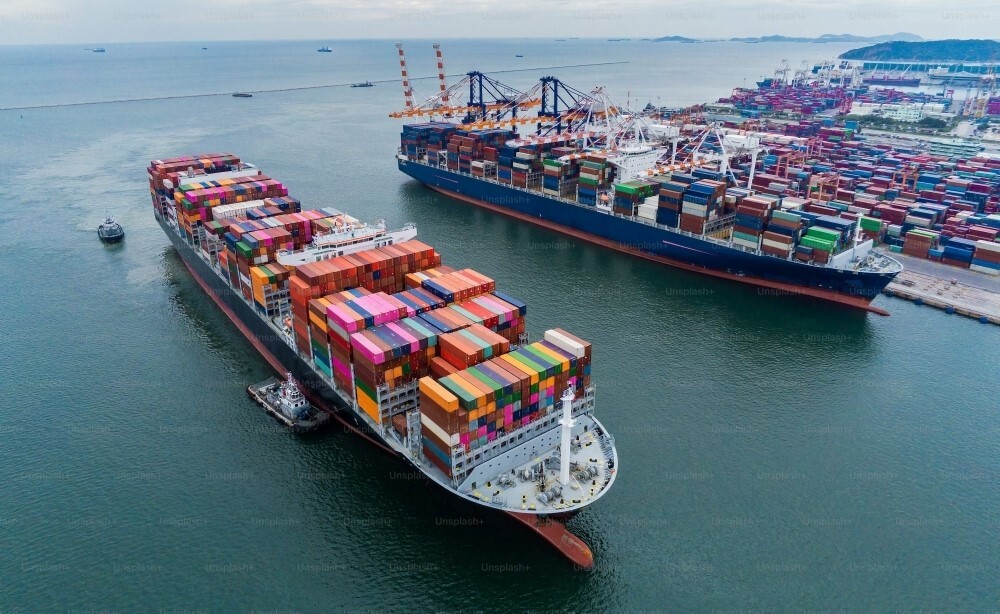

The aluminium processing industry experienced a marked downturn in June 2025, with the composite Purchasing Managers’ Index (PMI) dropping to 40.1 per cent. This decline of 9.7 percentage points from May and 1.5 per cent year-on-year firmly placed the index in contraction territory below the critical 50-point mark. The drop signals a broad-based deceleration across all aluminium processing sub-sectors, driven by a complex set of challenges.

Image Credit: unsplash.com
A confluence of factors contributed to this downturn. Seasonal weakness was more acute than usual, intensifying the traditional off-season effect. Aluminium prices remained elevated at around RMB 21,000 per tonne, limiting the purchasing capacity of downstream sectors. Domestic demand weakened further due to sluggish cargo movement and consumer hesitation. High finished product inventories led to widespread production cuts, while uncertainties in global trade, particularly unresolved tensions between China and the US, meant limited support from exports. SMM analysts described the situation as a “perfect storm” of seasonal and cost pressures, with buyers taking a cautious, wait-and-see stance.
Among the hardest-hit segments was the aluminium plate, sheet and strip industry, which saw its PMI fall to 39.1 per cent, down 10.5 percentage points from May. Both production and new orders indices sank to 29.2 per cent, reflecting a sharp deceleration. Inventory buildup was considerable, with finished product inventories at 60.8 per cent. Export orders stood at 42.8 per cent, better than domestic demand but still below expansion levels. The construction sector, a major end-user, was especially weak, with delayed or cancelled projects. High aluminium prices continued to deter purchases, leading to production cuts of 30-40 per cent in many facilities. While some exports related to appliances and kitchen products saw mild gains from trade consultations, these were too limited to offset broader declines.
The aluminium foil sector recorded a PMI of 45.3 per cent in June, reflecting a moderate month-on-month contraction while remaining in a state of decline. Production and new orders indices were at 41.2 per cent, with inventories still high at 52.8 per cent. Export orders, though slightly better, were at 47.3 per cent. Packaging foil demand has seen a sharp decline since April, and a price war has driven processing fees to multi-year lows, reaching as low as RMB 5,800 per tonne in some cases. To retain market share, many manufacturers turned to discount-based volume sales, undermining profitability. Inventory turnover rates have fallen by around 15 per cent compared to seasonal norms, showing the limited success of destocking efforts.
The construction aluminium extrusion segment posted a PMI of 40.44 per cent, reflecting significant contraction. Production and new orders indices were 29.6 per cent and 37.69 per cent, respectively, while procurement volume and raw material inventories dropped to 29.15 per cent and 34.75 per cent. Despite policy support, the real estate market remains stagnant, with new project starts down 12 per cent from already weak 2024 levels. Many producers are operating at only 50-60 per cent capacity. The weak backlog of orders, combined with falling processing fees, particularly for products like thermal insulation and coated extrusions, has further pressured margins. Fee reductions of up to 10 per cent have been reported in just the last quarter.
The industrial extrusion sector faced even steeper challenges, with its PMI plunging to 37.61 per cent. The production index stood at 30.33 per cent, and new orders at 29.0 per cent, while procurement volume dropped sharply to 21.05 per cent. Raw material inventories were similarly low at 28.68 per cent. Major declines were reported in photovoltaic (PV) frame production, which dropped 25-30 per cent in June, reversing previous gains. While demand from rail transit, aerospace and 3C electronics remained stable, profit margins came under increasing pressure. The auto parts industry fared worst, with capacity utilisation falling below 45 per cent in many plants and declining order volumes raising concerns over business viability. Further declines in processing fees are expected in the coming months, threatening the sustainability of smaller operations.
After several months of growth, the aluminium wire and cable industry also saw its PMI slip to 40.2 per cent in June. The production index dropped to 37.11 per cent, and new orders fell significantly to 31.42 per cent. Raw material inventories were reduced to 43 per cent, and finished product inventories to 37.76 per cent as companies focused on managing financial stress. The end of the first-half delivery cycle for State Grid orders left a demand vacuum. While new bidding rounds in June showed early promise, actual order volumes were about 35 per cent lower than anticipated. As prices rose and demand softened, procurement slowed considerably, forcing many companies to reduce workweeks to manage costs and retain core personnel.
The primary aluminium alloy sector recorded a steep decline, with its PMI falling to 36.5 per cent, down 5 points from May. Both production and new orders indices plummeted to 22.9 per cent, hitting yearly lows. Finished product inventories rose to 58.8 per cent, while procurement activity remained cautious at 26.5 per cent. Export orders held flat at 50.0 per cent, largely due to alternative routes through Mexico. Domestic demand was weak, with many auto and appliance makers cutting Q3 forecasts. Aluminium prices, hovering above RMB 20,500 per tonne, continued to stifle terminal demand. Inventory accumulation strained working capital, and operating rates followed a pattern of brief stability followed by steep declines. Export limitations caused by ongoing trade barriers further complicated recovery efforts.
The secondary aluminium alloy market showed slight month-on-month improvement, with its PMI rising to 45.0 per cent, though it remained below the growth threshold. Demand conditions deteriorated, especially from auto sector clients who reduced orders by 15 per cent from May. Price movements were restrained, with ADC12 trading within a narrow band of RMB 19,100-19,400 per tonne. Smaller producers, driven by urgent cash flow needs, offered material at deep discounts, intensifying market competition. The launch of cast aluminium alloy futures on June 10 spurred some speculative trading but had a limited impact on actual consumption.
Looking into July 2025, industry headwinds are expected to persist. Most aluminium processing sectors are forecast to remain in contraction through mid-August, with limited relief before the late-Q3 seasonal demand returns. Aluminium prices are unlikely to drop significantly, keeping pressure on downstream demand. Inventory management and cash flow protection remain key business strategies.
In the plate/sheet and strip segment, further production cuts are likely if destocking fails to progress. Any impact from new infrastructure spending is expected to materialise slowly, with tangible benefits delayed until September.
The foil sector may contract further as price wars deepen and processing fees fall below RMB 5,500 per tonne. Smaller producers may be forced to reduce output below 50 per cent, while larger players use their scale to endure the downturn.
The construction extrusion sector will likely remain subdued, with any recovery hinging on real estate market revival. Government-backed credit lines for affordable housing could offer marginal support, but results will be slow and limited.
Industrial extrusion is expected to remain in decline, although the PV sector might stabilise if new solar policies translate into demand. Persistent financial strain could lead to more industry exits or consolidation.
Wire and cable production is likely to stay weak through July as companies reduce both raw and finished stockpiles. While rural grid upgrade projects may offer some promise, uncertainty around timing and scale remains.
In the primary alloy segment, operating rates may drop below 60 per cent at many facilities. Trade clarity and cost reductions are essential for recovery, but neither appears imminent. Many producers are actively exploring exports to India, Southeast Asia and Mexico as alternatives.
Secondary aluminium is also projected to remain in contraction. Seasonal slowdowns in automotive production will further reduce demand, while limited scrap availability may offer minor pricing support at the cost of margins.
Across the board, production cuts are cascading through the aluminium supply chain. Inventory rationalisation is now critical for financial health, prompting tighter procurement practices and reduced working capital allocation. Aluminium prices remain high, triggering delays in downstream orders and igniting price wars in vulnerable segments.
The financial situation has become precarious for many processors. With EBITDA margins slashed to half of five-year averages, companies are urgently optimising operations. Market volatility adds further complexity to pricing strategies and long-term planning, with short-term contracts becoming the norm despite the operational inefficiencies they create.
Information credit: https://discoveryalert.com.au/
Responses








